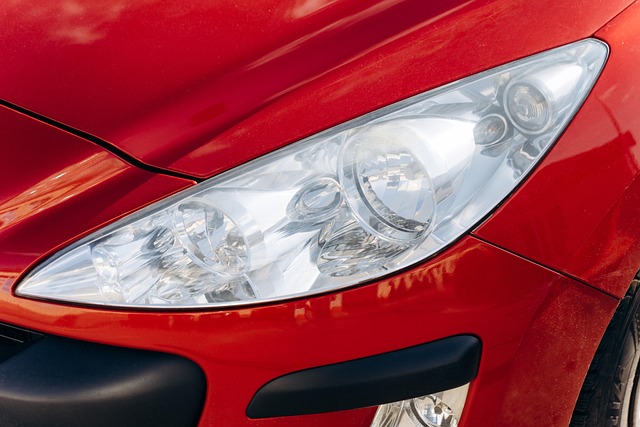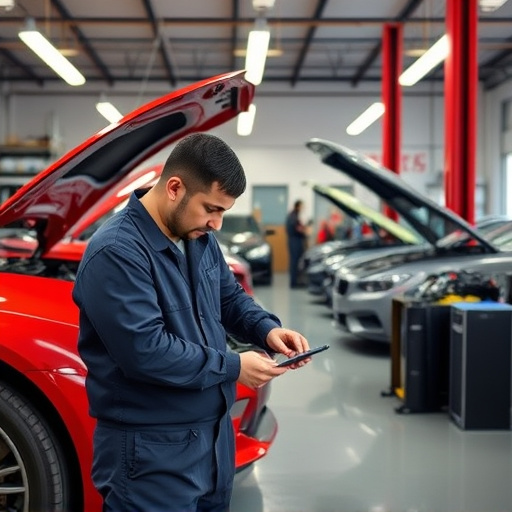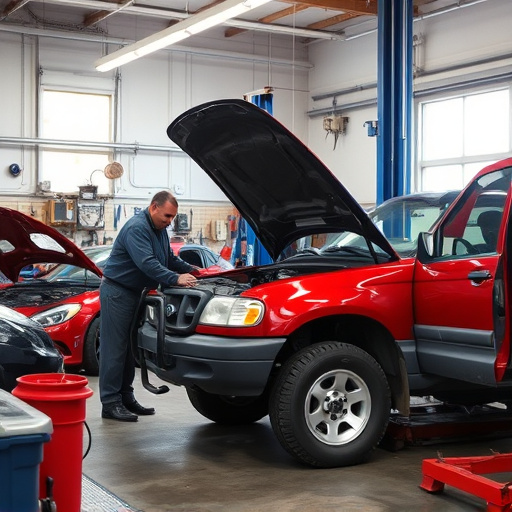3D car scanning technology revolutionizes quality control in the automotive industry by creating precise digital models of vehicles, capturing every detail from curves to complex shapes. This advanced system is a game-changer for collision repair and paint shops, ensuring accurate dent removal and minimal errors in car paint repairs. By eliminating subjective human measurements, 3D scanning enhances overall quality, improves repair accuracy, reduces human error, and ultimately boosts customer satisfaction, while also enabling early detection of subtle imperfections and facilitating continuous improvement in car manufacturing.
“Revolutionize quality control in the automotive industry with 3D car scanning technology. This advanced process captures intricate vehicle details with remarkable accuracy, enabling more efficient and precise assessments. By understanding how 3D scanning works and its technical prowess, manufacturers can enhance existing quality control measures.
The article explores the positive impact of 3D scanning on the industry, highlighting benefits such as improved detection of defects, enhanced measurement accuracy, and streamlined production processes.”
- Understanding 3D Car Scanning Technology: How It Works
- Enhancing Quality Control Processes with 3D Scanning
- The Benefits and Impact on the Automotive Industry
Understanding 3D Car Scanning Technology: How It Works

3D car scanning technology has revolutionized quality control in the automotive industry. This advanced system uses specialized sensors and cameras to capture detailed 3D models of vehicles, offering an accurate digital representation of their physical attributes. By creating precise measurements and visual data, it becomes possible to meticulously assess every angle, curve, and contour of a car’s exterior. This technology plays a pivotal role in ensuring consistent quality across vehicle production lines, enabling manufacturers to identify even the slightest deviations from the design specifications.
The process involves scanning the entire surface of the car, including complex shapes and intricate details, generating a vast amount of data points that form a comprehensive 3D map. This digital blueprint can then be used for various purposes, such as quality assurance checks, comparing against original designs, or guiding specialized repairs like vehicle restoration and addressing minor damage, including car scratch repair. Auto repair services benefit significantly from this technology, ensuring that every repair is both precise and consistent with the vehicle’s original manufacturing standards.
Enhancing Quality Control Processes with 3D Scanning

The integration of 3D car scanning technology has revolutionized quality control processes in the automotive industry. This advanced technique provides an accurate and detailed digital representation of vehicles, allowing for meticulous inspection and analysis. By capturing intricate dimensions and surface features, 3D scanners enable thorough assessment of cars, especially in complex areas like panels and body structures. This technology is a game-changer for collision repair centers and paint shops as it facilitates precise dent removal and car paint repair, ensuring minimal errors and maximizing efficiency.
With 3D scanning, the process of quality control becomes more objective and consistent. It eliminates subjective human measurements, reducing the potential for human error. This precision is particularly valuable in identifying subtle defects, misalignments, or inconsistencies that might be overlooked during traditional manual inspections. As a result, 3D car scanning technology enhances overall quality, improves repair accuracy, and ultimately contributes to higher customer satisfaction in both collision repair centers and paint-related services.
The Benefits and Impact on the Automotive Industry

The automotive industry has witnessed a significant transformation with the advent of 3D car scanning technology. This innovative tool is revolutionizing quality control processes, ensuring unparalleled precision and efficiency. By capturing detailed 3D models of vehicles, manufacturers can identify even the subtlest imperfections or deviations from the original design. This early detection capability is instrumental in car restoration projects, enabling restorers to address issues promptly and accurately. Moreover, it streamlines the car damage repair process, as technicians can use the scanned data for precise dent removal and panel alignment, leading to faster turnaround times and higher-quality outcomes.
In terms of impact, 3D scanning technology is reducing human error and improving overall product quality. It facilitates comprehensive inspections, allowing for a deeper understanding of complex vehicle structures. This advanced level of scrutiny is crucial in identifying potential issues that might go unnoticed during traditional manual inspections. As a result, manufacturers can enhance their control over the production process, leading to better-built vehicles. Furthermore, the technology’s ability to capture and compare historical data against new scans opens up opportunities for continuous improvement in car manufacturing, ensuring that each vehicle meets the highest standards of quality and precision.
3D car scanning technology is transforming quality control in the automotive industry by offering unprecedented precision and efficiency. By accurately capturing detailed digital representations of vehicles, this innovative process enables comprehensive inspections, identifies defects early in the manufacturing pipeline, and streamlines overall production. As 3D scanning continues to evolve, its role in ensuring high-quality standards and reducing costs will only grow, marking a significant advancement for modern automotive manufacturing.














